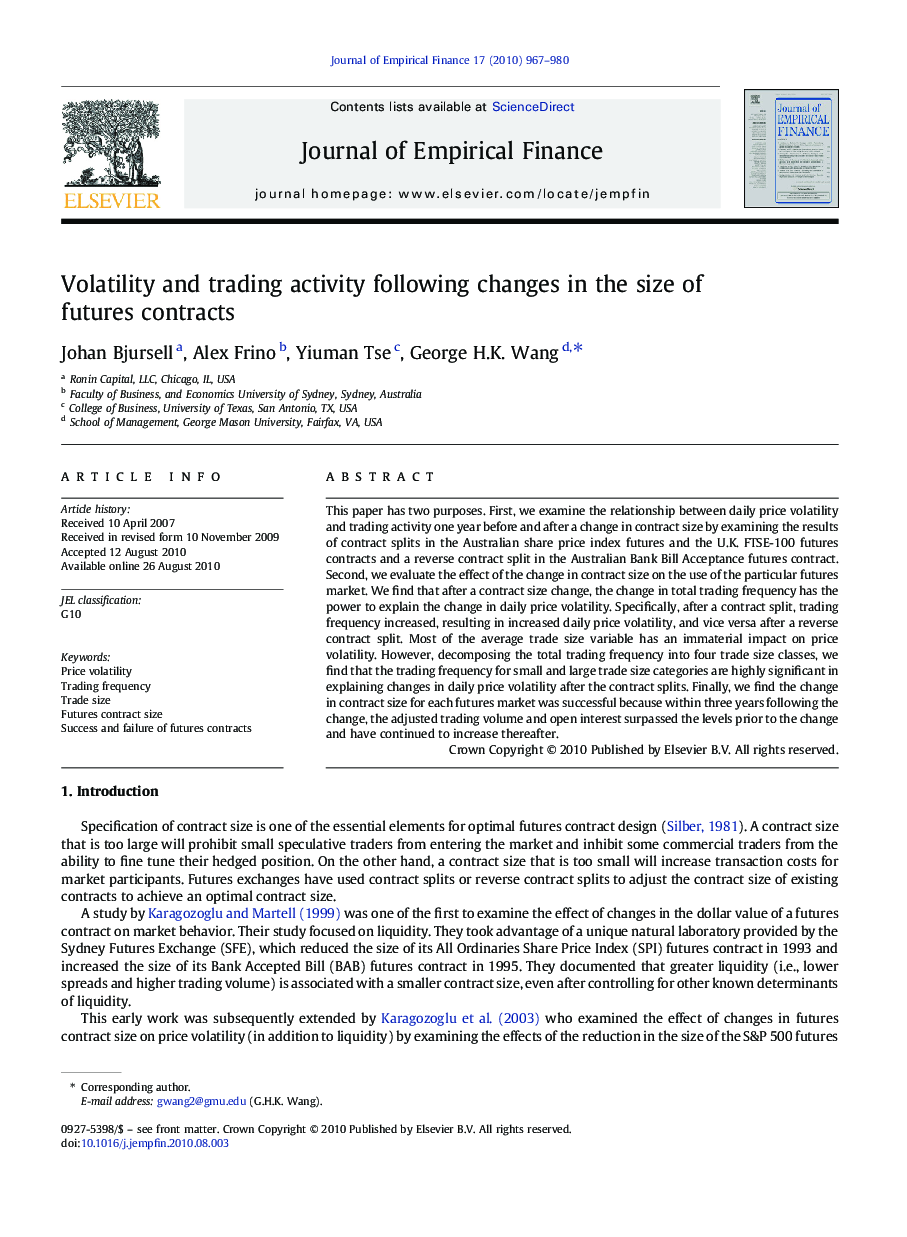| Article ID | Journal | Published Year | Pages | File Type |
|---|---|---|---|---|
| 958547 | Journal of Empirical Finance | 2010 | 14 Pages |
This paper has two purposes. First, we examine the relationship between daily price volatility and trading activity one year before and after a change in contract size by examining the results of contract splits in the Australian share price index futures and the U.K. FTSE-100 futures contracts and a reverse contract split in the Australian Bank Bill Acceptance futures contract. Second, we evaluate the effect of the change in contract size on the use of the particular futures market. We find that after a contract size change, the change in total trading frequency has the power to explain the change in daily price volatility. Specifically, after a contract split, trading frequency increased, resulting in increased daily price volatility, and vice versa after a reverse contract split. Most of the average trade size variable has an immaterial impact on price volatility. However, decomposing the total trading frequency into four trade size classes, we find that the trading frequency for small and large trade size categories are highly significant in explaining changes in daily price volatility after the contract splits. Finally, we find the change in contract size for each futures market was successful because within three years following the change, the adjusted trading volume and open interest surpassed the levels prior to the change and have continued to increase thereafter.
